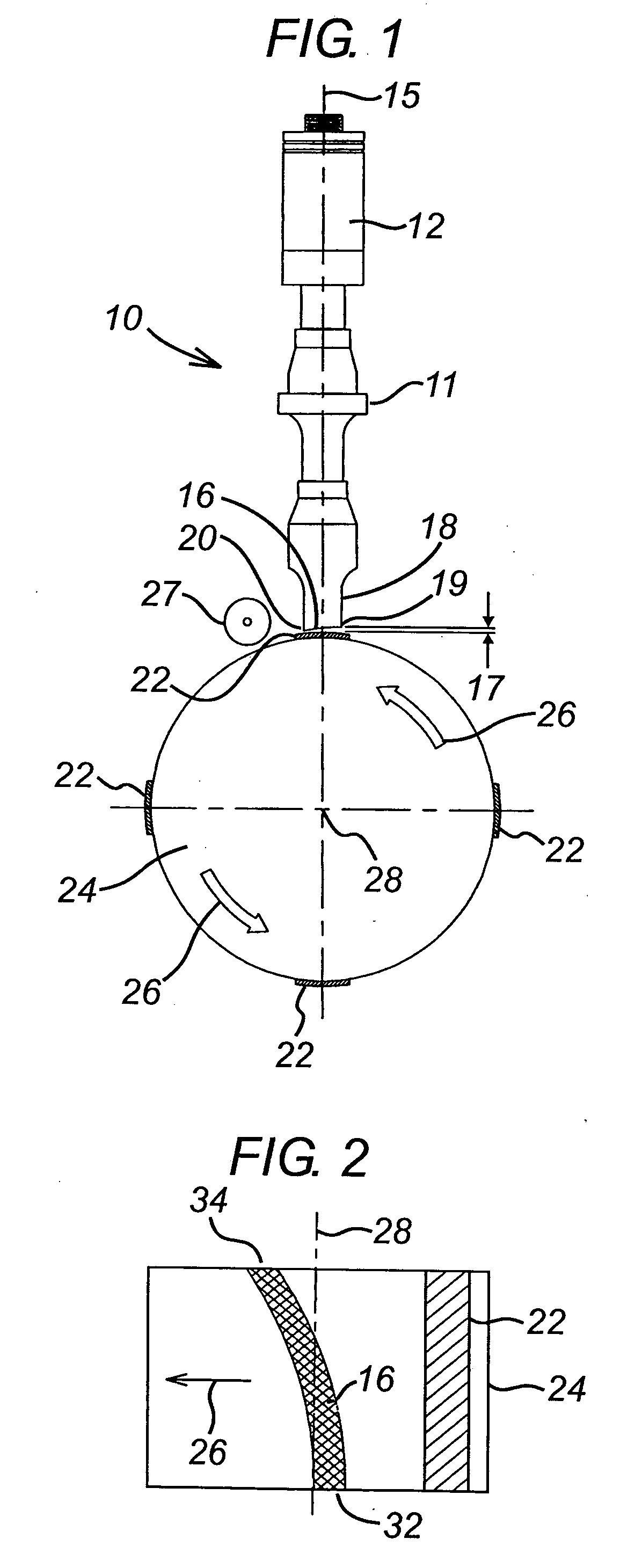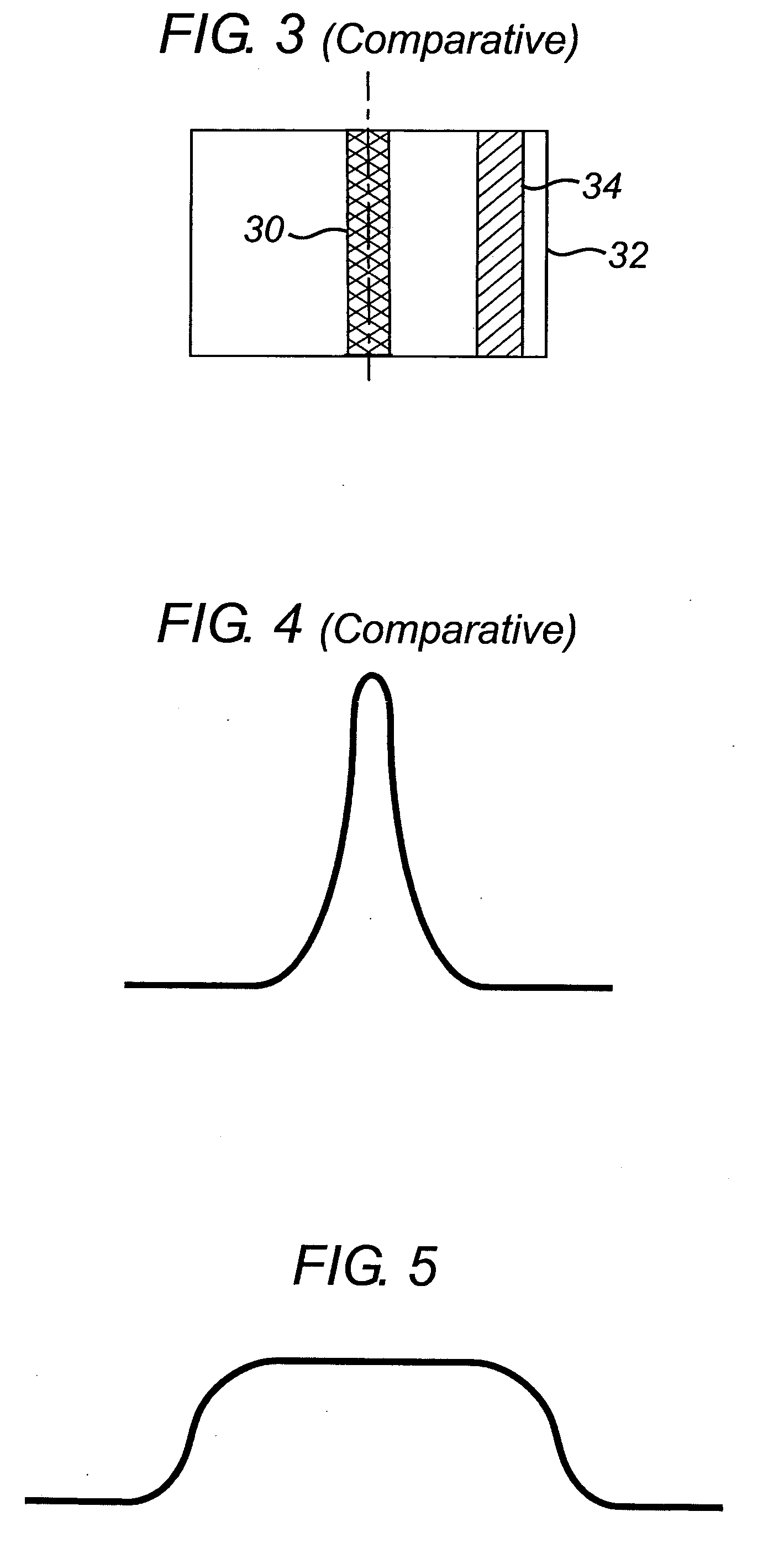Rotary ultrasonic sealing
- Summary
- Abstract
- Description
- Claims
- Application Information
AI Technical Summary
Benefits of technology
Problems solved by technology
Method used
Image
Examples
Embodiment Construction
[0026]Referring to FIG. 1, the apparatus comprises a sonotrode assembly 10 and a rotating anvil 24. The sonotrode assembly 10 comprises an ultrasonic actuator 12 that is coupled to a booster or number of boosters 11 coupled to sonotrode head 18. The sonotrode head 18 has an elongate, profiled sealing end face 16 that faces the rotating anvil 24. The anvil 24 comprises a roller provided with four raised portions 22 of substantially constant width (measured along the circumference of the anvil) and height (measured radially from the center of the roller) extending along its outer surface parallel to the axis of rotation 28 of the anvil. In the configuration shown in the drawing, it can be seen that a sealing gap 17 is intermittently defined between the sonotrode end face 16 and the outer surface of each raised portion 22 of the roller anvil.
[0027]The end face 16 is profiled to provide a sealing gap 17 between the sonotrode and the anvil 24. The end face 16 of the sonotrode is profiled...
PUM
| Property | Measurement | Unit |
|---|---|---|
| Length | aaaaa | aaaaa |
| Thickness | aaaaa | aaaaa |
| Speed | aaaaa | aaaaa |
Abstract
Description
Claims
Application Information
 Login to View More
Login to View More - R&D
- Intellectual Property
- Life Sciences
- Materials
- Tech Scout
- Unparalleled Data Quality
- Higher Quality Content
- 60% Fewer Hallucinations
Browse by: Latest US Patents, China's latest patents, Technical Efficacy Thesaurus, Application Domain, Technology Topic, Popular Technical Reports.
© 2025 PatSnap. All rights reserved.Legal|Privacy policy|Modern Slavery Act Transparency Statement|Sitemap|About US| Contact US: help@patsnap.com



